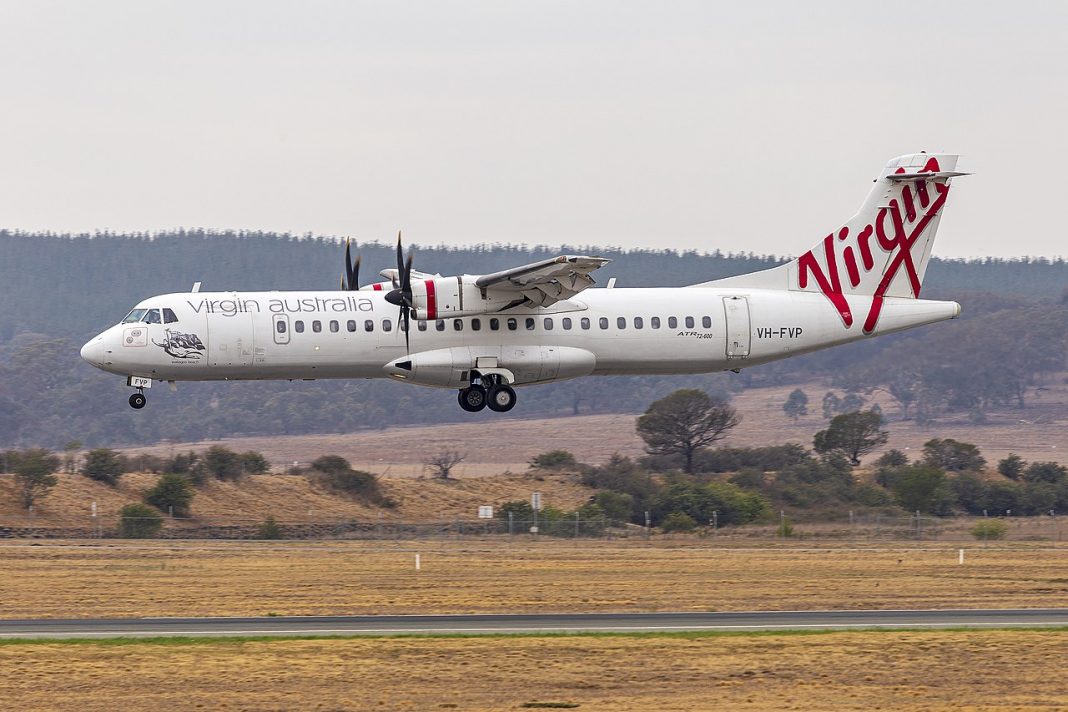An investigation just completed by Australia’s transport safety watchdog, the Australian Transport Safety Bureau (ATSB), found that a pilot conducting a training flight last year came within 75 vertical feet of a Virgin Australia ATR-72 over an airport in regional New South Wales.

Training pilot came within 75 feet of Virgin Australia ATR
The incident occurred nearby Albury Airport on October 19, 2019. On Thursday, the ATSB released its completed report. It found the pilot on the training flight, flying a Piper PA-28-161 from the Australian Airline Pilots Academy, did not sight the Virgin Australia plane.
The controller had instructed the training flight to follow the Virgin Australia ATR into Albury. But the Piper’s pilot did not advise the controller they did not have the ATR sighted before turning in front of the ATR plane, resulting in a near collision.
Further, while the Virgin Australia pilots knew the Piper was in the area, they did not verify its position until a traffic collision avoidance system alert was received. At this point, the Virgin Australia aircraft was at 600 feet, and separation was just 364 horizontal feet and 75 vertical feet. The Virgin Australia flight immediately initiated a missed approach.
The Virgin Australia ATR-72 (which the airline no longer operates) was operating a scheduled flight from Sydney to Albury via Wagga Wagga. There were 70 people onboard the ATR. The solo pilot operating the training flight had only obtained his private pilot’s license the day before. The pilot was completing a navigation exercise as part of the commercial pilot license syllabus.

Training pilot failed to acknowledge the controller’s instructions
In the lead-up to the near-miss, the Albury control tower contacted the Piper’s pilot to instruct him to join the mid‑downwind leg of the right circuit for runway 25. The controller then provided the Piper with an onwards clearance after the touch-and-go landing. Immediately after this, the crew of the Virgin Australia ATR advised the controller that they were at the final waypoint. At this point, the controller cleared them to land.
Albury control then told the training flight;
” … You’re number two following an ATR on about a four‑mile final, report traffic in sight.”
The ATSB report found the Piper’s pilot acknowledged the instruction by advising the aircraft’s callsign. However, the pilot did not repeat any part of the instruction back to the controller. Less than a minute later, the plane joined the downwind leg for a right circuit to runway 25 at Albury Airport.
By the time the Piper joined the downwind leg, it had not sighted the ATR or advised the controller that they did not have it sighted. Simultaneously, a third aircraft had diverted the controller’s attention. The controller focused on clearing the third plane out of the ATR’s way.
At 600 feet, the Virgin Australia pilots got their traffic collision avoidance system alert. They sighted the Piper nearby and began the missed approach. The controller remained focused on the third aircraft. He was not aware of the near-miss until the Virgin Australia pilots radioed in the missed approach.
Albury control then notified the Piper’s pilot of the incident and asked what was going on. The pilot replied only with his registration. Control cleared to land but came in too fast and ended up going around.

The findings and fallout from the near-miss
The airspace around Albury Airport is zoned as Class D airspace. That means apart from runway operations, there is no separation standard required between two aircraft of this type. But pilots must follow instructions given by controllers. However, ultimately separation between aircraft is the responsibility of flight crews in this type of airspace.
The ATSB report highlighted three issues:
- The Piper aircraft’s pilot did not sight the ATR aircraft, which the controller had instructed them to follow. Further, the pilot did not advise the controller they did not have the aircraft sighted before turning on to the base leg of the circuit in front of the ATR aircraft, resulting in a near collision;
- The crew of the ATR were aware that there was traffic in the area. However, they did not assess the position of the Piper in relation to their aircraft until activation of the traffic collision avoidance system; and
- The controller did not seek confirmation that the Piper’s pilot had sighted the ATR before diverting attention to an aircraft outside the circuit area. This interrupted the effective monitoring of the aircraft in the area, and the developing near-collision was not identified.
The Australian Airline Pilots Academy also conducted an investigation and has since implemented additional risk controls when flying around Albury Airport. Further, Virgin Australia Airlines and Airservices Australia have commenced discussions to discuss the ongoing risk to flights in and out of non‑controlled and Class D airports.
[ad_2]
Source link


